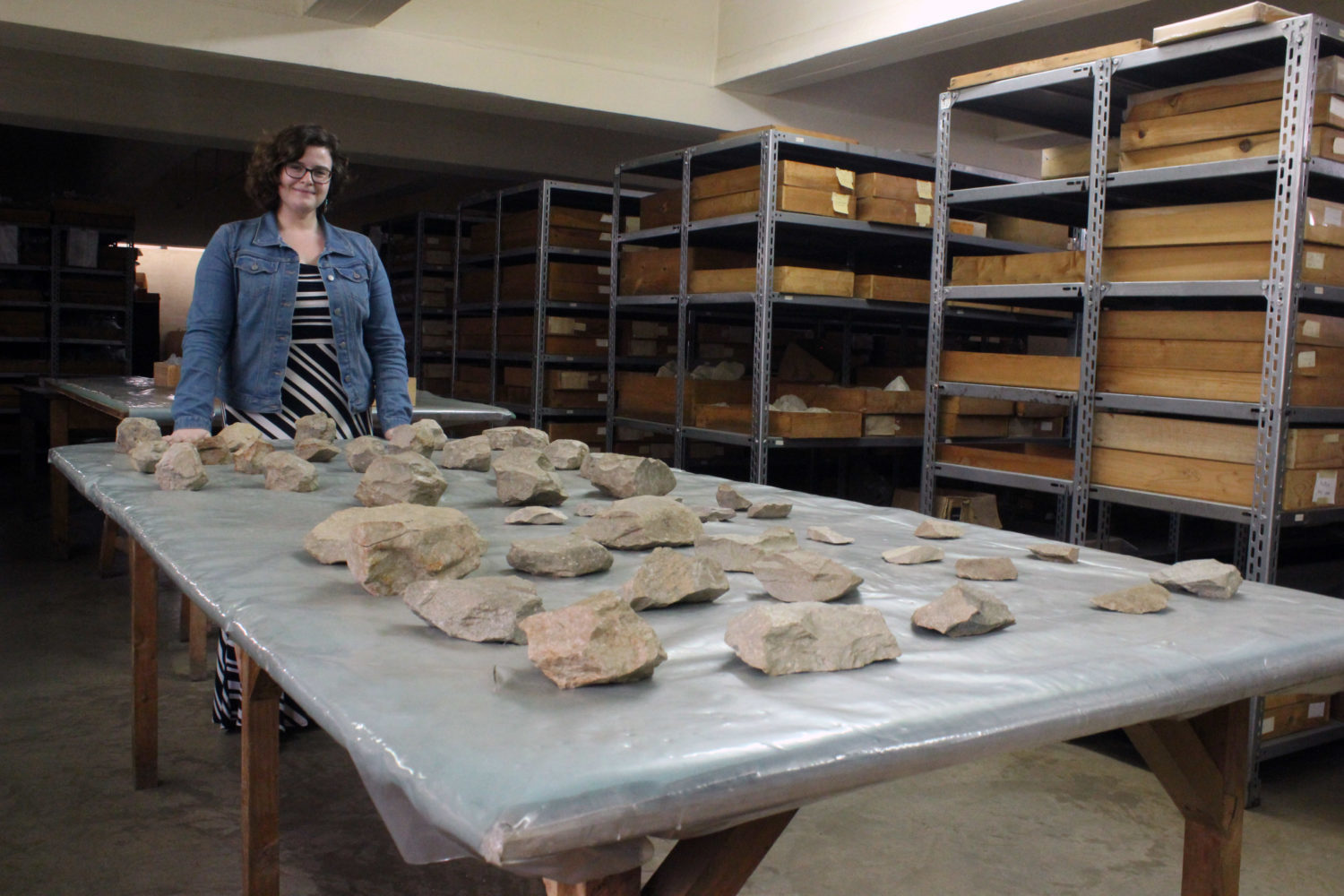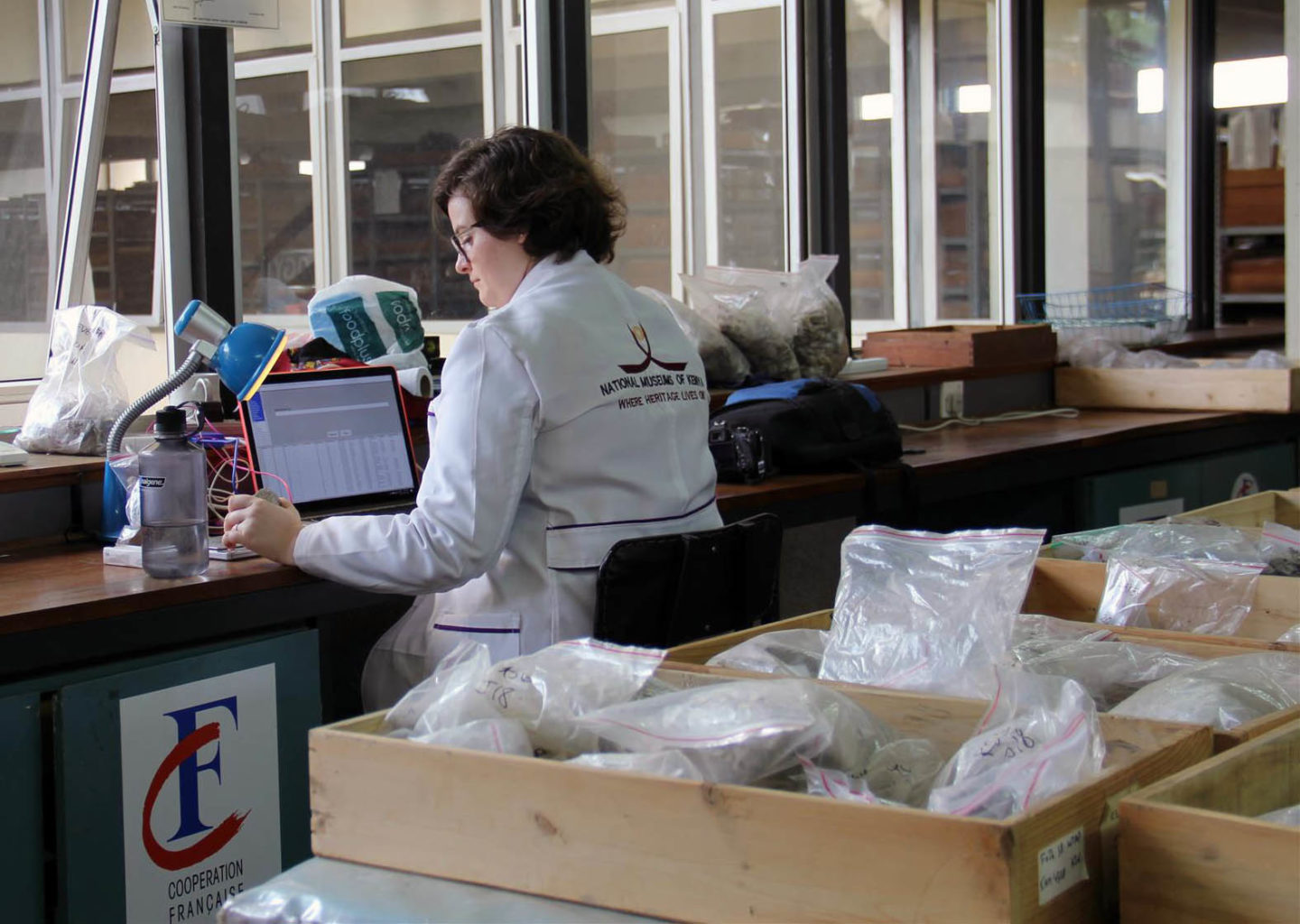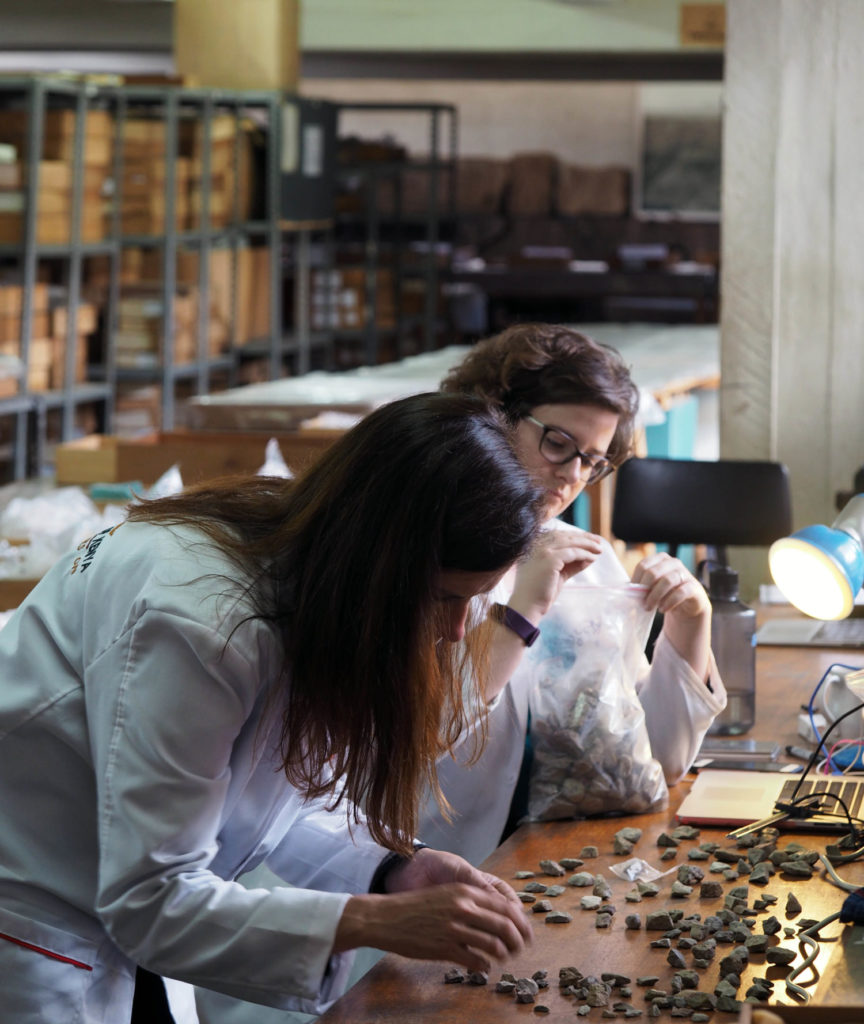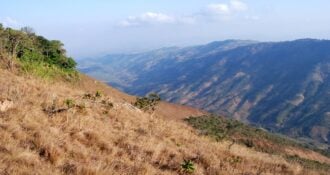Hilary Duke of Stony Brook University was awarded a Leakey Foundation Research Grant in the fall of 2016 for her project entitled “Taking shape: Investigating the earliest Acheulean at Kokiselei, Kenya (1.8-1.76Ma).” Last year we shared a summary of her work. Here she updates us on her progress!
My fieldwork takes place in the city of Nairobi, Kenya at the National Museums of Kenya (NMK). The NMK holds hundreds of archaeological collections from excavations that have taken place all across the country. Some of these collections were excavated decades ago, but they hold enormous potential for current paleoanthropological research.
This was my final visit to the NMK for my dissertation archaeological data collection, following two prior trips in 2014 and 2016. This time, I spent 14 weeks analyzing thousands of lithic artefacts from three separate sites that were excavated in the Kokiselei Site Complex, west of the Lake Turkana in northern Kenya. The West Turkana Archaeological Project excavated three main sites in the Kokiselei Site Complex (KS) during the late 90’s and early 2000’s. My research focused on these three sites: KS4, KS5, and KS6 (1.8-1.76 Ma). A few publications were released by WTAP researchers describing artefactual highlights from two of these assemblages (KS4 and KS5) (Texier et al. 2006; Lepre et al. 2011). The most well-known publication presented the world’s earliest known Acheulean artefacts from Kokiselei 4 dated to 1.76 million years ago (Ma) (Lepre et al. 2011).
I had a fairly good idea of the types of artefacts that I would encounter in these assemblages from my two prior visits and the early WTAP publications, but was still pleasantly surprised with the vast variability in these collections. All of the Kokiselei assemblages were not yet fully described in prior publications, so my research this past summer finally provided a clear picture of how variability in lithic production at Kokiselei changed (or stayed the same) throughout the sequence. These diachronic patterns seem to be more complex than simply the introduction of new artefact types (e.g., handaxes) in Kokiselei 4. Rather, my data demonstrates that the production of handaxes, and all other lithic artefacts, involved multiple knapping strategies. The diversity in these methods and techniques suggests that Early Pleistocene hominins (such as Homo ergaster/erectus) had a wide range of strategies in their knapping repertoires, and that they could apply these flexibly in different situations.
Solo museum studies can be lonesome (no matter how interesting the artefacts are), so I was thrilled when WTAP director and dissertation committee member Prof. Sonia Harmand (Stony Brook University, NY and the CNRS, Paris), former director Hélène Roche (CNRS, Paris), and team member Dr. Nicholas Taylor (Stony Brook University, NY) joined me at the NMK in July. As they worked on their own projects, we shared ideas and kept each other motivated. I am grateful to have had the rare opportunity to work directly with my mentors for part of my dissertation data collection. Their encouragement and expertise gave me the energy I needed for that last push of data collection – what a breath of fresh air!
With my complete dataset in hand, I am looking forward to diving deeper into statistical analyses to explore which technological traits (e.g., stone raw material type, size, shape, etc.) are driving variability in the assemblages, and further, to better understand how hominin knapping strategies might have changed through time in the Kokiselei sequence.
References
Lepre, C. J., Roche, H., Kent, D. V., Harmand, S., Quinn, R. L., Brugal, J. P., … & Feibel, C. S. (2011). An earlier origin for the Acheulian. Nature, 477(7362), 82-85.
Texier P.-J., Roche H., Harmand S. (2006). Kokiselei 5, Formation de Nachukui, West Turkana (Kenya): Un témoignage de la variabilité ou de l’évolution des comportements techniques au Pléistocène ancien?BAR International Series 1522:11–22.









Comments 0